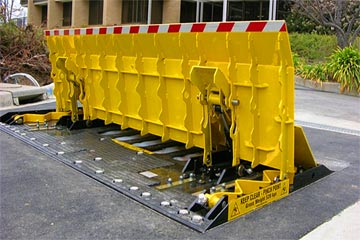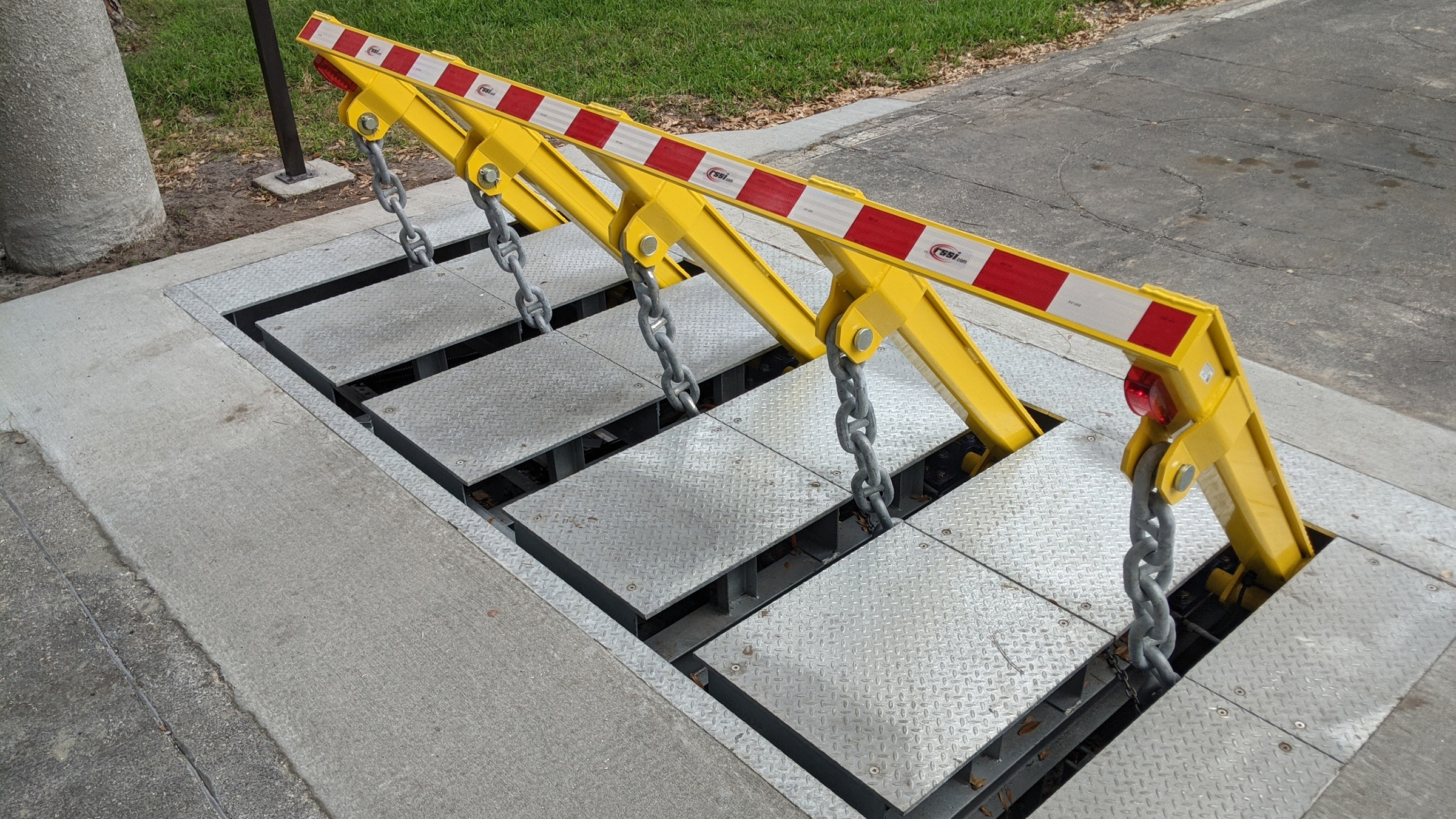The smart Trick of Wedge Barriers That Nobody is Talking About
The Single Strategy To Use For Wedge Barriers
Table of ContentsSome Known Incorrect Statements About Wedge Barriers A Biased View of Wedge Barriers


18 may be done faster, conveniently, and cost efficiently. FIG. In specific personifications, the anchor 30 may be a steel structure consisting of plates, light beams(e. g., I-beams ), and/or other frameworks that are safeguarded within the structure 14, which may be concrete. At the surface 12, a top side 28 of the anchor 30 may go to the very least partially revealed
, thereby enabling the accessory of the obstacle 10 to the support 30. g., threaded openings)in several beam of lights or plates of the support 30 might be exposed to the surface area 12. In this way, bolts 32 or various other mechanical fasteners might be used to safeguard the obstacle 10 to the support 30. As the obstacle 10 is installed to the surface area 12 of the foundation 14, collection of particles and other product underneath the obstacle may be reduced, and components of the bather 10 may not be exposed to listed below grade environments. As shown by reference character 52, the lifting mechanism 50 consists of components got rid of under the wedge plate 16. The elements 52 below the wedge plate 16 might include an electromechanical actuator, a camera, one or even more webcam surface areas, and so forth. Furthermore, the lifting mechanism 50 includes a spring setting up 54
The spring pole 58 is coupled to a web cam(e. g., web cam 80 displayed in FIG. 4) of the lifting system 50. The springs 60 disposed about the springtime pole 58 are held in compression by spring sustains 62, including a dealt with springtime assistance 64. That is, the fixed springtime assistance 64 is repaired about the structure 14 and the remainder of the bather 10.
Wedge Barriers - The Facts
The remaining force used to
the cam to deploy the wedge plate 16 may might provided by an electromechanical actuator 84 or other various other. The spring assembly 54 and the actuator 84(e. Wedge Barriers. g., electromechanical actuator)might run with each other to convert the camera and raise the wedge plate 16.
As mentioned over, the springtime assembly 54 applies a continuous force on the webcam, while the electromechanical actuator may be controlled to apply a variable pressure on the webcam, consequently making it possible for the lifting and lowering( i. e., deploying and pulling back )of the wedge plate 16. In particular personifications, the consistent pressure applied by the springtime setting up 54 might be adjustable. g., electromechanical actuator) is impaired. As Extra resources will be valued, the springtime assembly 54 may be covered and protected from debris or other components by click here for more a cover plate(e. g., cover plate 68 revealed in FIG. 4) that may be considerably flush with the elevated surface 38 of the structure 14. As pointed out over, in the deployed position, the wedge plate 16 serves to block accessibility or travel past the obstacle 10. For example, the obstacle 10(e. g., the wedge plate 16 )may obstruct pedestrians or vehicles from accessing a residential property or pathway. As talked about over, the obstacle 10 is connected to the support 30 protected within the structure 14,

front braces 71. Consequently, the link assemblies 72 may pivot and rotate to make it possible for the collapse and extension of the link assemblies 72 during retraction and implementation of the bather 10. The link settings up 72 cause movement of the wedge plate 16 to be restricted. For instance, if an automobile is traveling towards the deployed wedge plate 16(e. As an example, in one circumstance, the safety legs 86 might be expanded throughoutupkeep of the obstacle 10. When the security legs 86 are deployed, the security go right here legs 86 sustain the weight of the wedge plate 16 against the surface area 12. Because of this, the lifting mechanism 50 might be shut down, serviced, eliminated, changed, etc. FIG. 5 is partial viewpoint view of an embodiment of the surface-mounted wedge-style barrier 10, illustrating the camera 80 and the web cam surface areas 82 of the training mechanism 50. Particularly, two camera surface areas 82, which are described as lower web cam surfaces 83, are positioned below the camera 80. The lower web cam surfaces 83 may be dealt with to the surface area 12 (e. For instance, the reduced camera surfaces 83 and the installing plate 85 may form a solitary piece that is secured to the anchor 30 by bolts or other mechanical bolts. In addition, two camera surfaces 82, which are referred to as upper web cam surface areas 87, are placed over the camera 80 and paired to (e. In other embodiments, stepping in layers or plates may be placed in between the surface 12 and the reduced web cam surface areas 83 and/or the wedge plate 16 and the top web cam surface areas 87 As pointed out above, the cam
80 equates along the camera surface areas 82 when the wedge plate 16 is lifted from the pulled back placement to the released setting. Additionally, as stated over, the spring assembly 54 (see FIG. 3 )may supply a force acting on the cam 80 in the direction 102 using spring rod 58, which might decrease the force the electromechanical actuator 84 is required to relate to the web cam 80 in order to actuate and raise the wedge plate 16. 1 )to the deployed position(see FIG. 4). As shown, the camera 80 consists of track wheels 104(e. g., rollers), which call and translate along the camera surfaces 82 throughout procedure.